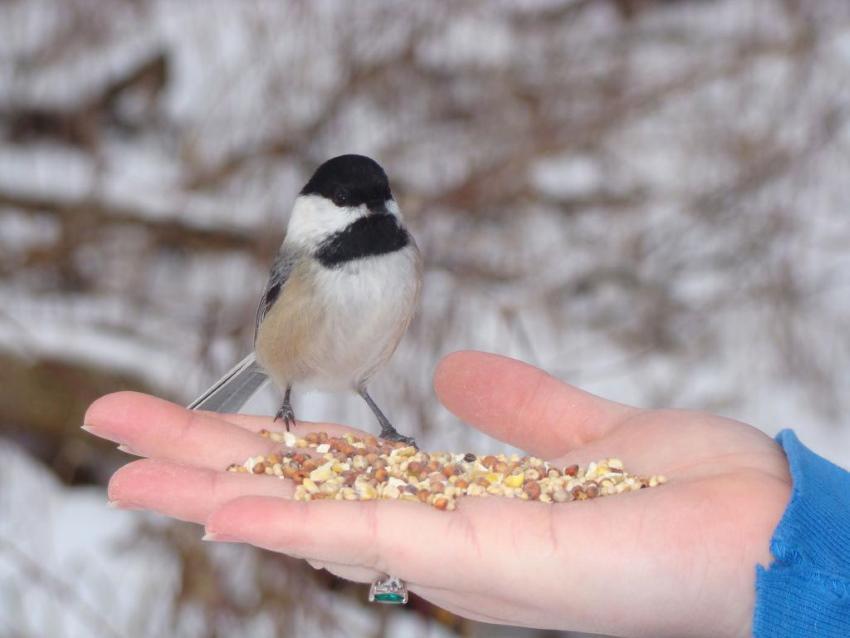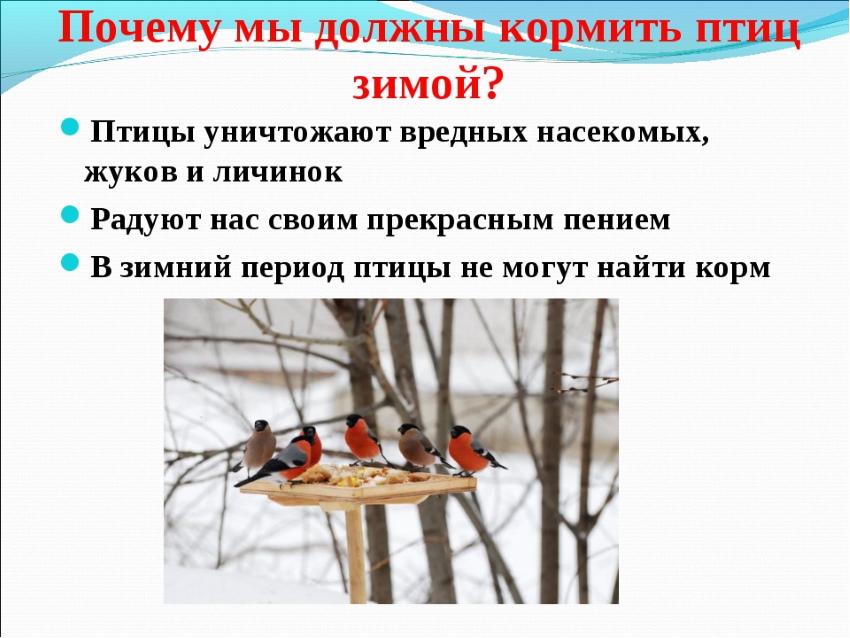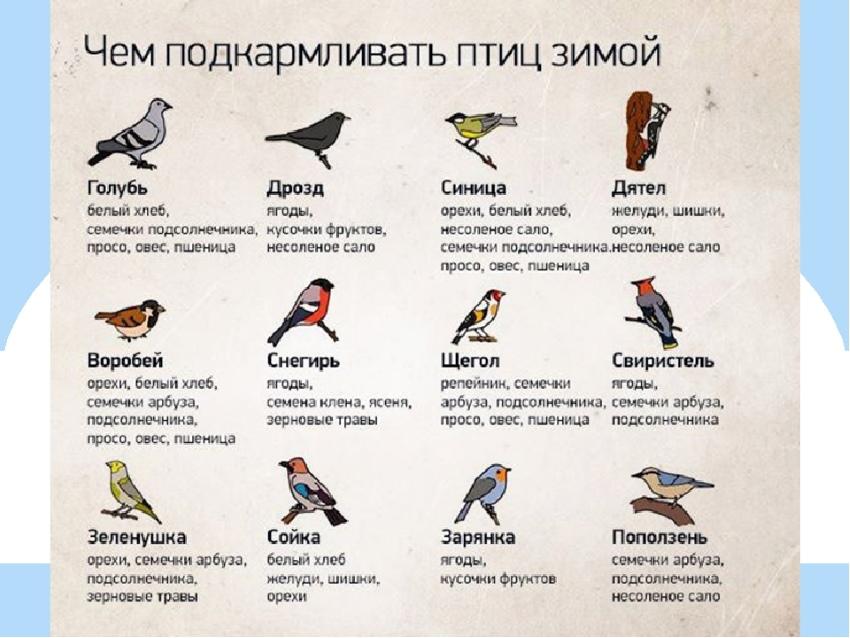How to feed birds correctly - helping birds survive the winter
 Perhaps, in the cold winter, only bears are good, which hibernate and do not need food, content with their own paws. But the feathered inhabitants of the forest are forced to look more carefully for their food, so as not to die of hunger. And in this we can help them, but on condition of knowledge of how to feed the birds correctly. After all, there are among those who do not fly to warm lands and remain to winter, both completely independent and completely dependent on a person. In an effort to help the first, we only harm them by drowning out natural instincts. In addition, it is generally desirable not to accustom some birds to readily available food.
Perhaps, in the cold winter, only bears are good, which hibernate and do not need food, content with their own paws. But the feathered inhabitants of the forest are forced to look more carefully for their food, so as not to die of hunger. And in this we can help them, but on condition of knowledge of how to feed the birds correctly. After all, there are among those who do not fly to warm lands and remain to winter, both completely independent and completely dependent on a person. In an effort to help the first, we only harm them by drowning out natural instincts. In addition, it is generally desirable not to accustom some birds to readily available food.
What birds need our help in winter

In general, birds can be divided into several groups, and already, based on this, it is determined with the need for feeding:
- Sinanthropes who do not leave their territory and are completely dependent on humans. These include sparrows and pigeons, which are native to the warm subtropics. In winter they will not survive without our help. The same applies to settled ducks - mallards, who refused to fly.
- Small forest birds, capable of foraging in winter, but at the same time eating grains in feeders with pleasure. Woodpeckers and tits, jays and greenfinches will not hesitate to visit the feeder, but they can do without it.
- Independent birds are nomads, providing themselves with food completely. Their food is the berries and seeds left on the branches, and if someone flies to the feeders, then they do not stay there for a long time. Thrushes, bullfinches, waxwings, goldfinches, siskins, pikas can winter without human help.
- Omnivorous birds, the number of which is beyond reasonable limits: hooded crows and magpies.
By feeding crows, we contribute to the increase in the number of this species. In turn, this endangers the lives of small birds. Crows ravage their nests and eat chicks.
How to feed birds properly
 When hanging a feeder in a garden or park, it is important to understand that it should not become the basis of the bird's diet, but only serve as top dressing. Tits and other species that have grown fat on a monotonous ration start to get sick and die. For this reason, the grain must be added not constantly, but once a day. It is advisable to do this at the same time, for example, in the morning. Then the birds will be able to search for food on their own day and evening.
When hanging a feeder in a garden or park, it is important to understand that it should not become the basis of the bird's diet, but only serve as top dressing. Tits and other species that have grown fat on a monotonous ration start to get sick and die. For this reason, the grain must be added not constantly, but once a day. It is advisable to do this at the same time, for example, in the morning. Then the birds will be able to search for food on their own day and evening.
The content of the feeder depends on the specific species of birds:
- pigeons are suitable for barley, wheat, barley, a little white bread and seeds;
- sparrows can eat the same thing as pigeons, except for tough barley, instead of which millet is suitable;
- it would be ideal for ducks to give compound feed or wheat, but not in water, since they drown, however, bread will do too;
- titmice love seeds, cottage cheese, bacon, apples.
Although the birds will peck at whatever is given to them, some foods are dangerous to them. So, you cannot feed the birds with fried seeds and salted bacon, black bread and millet.